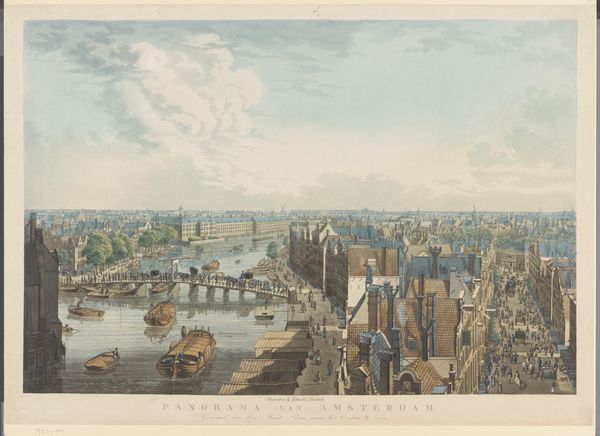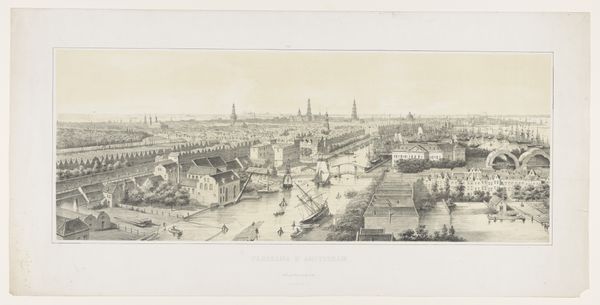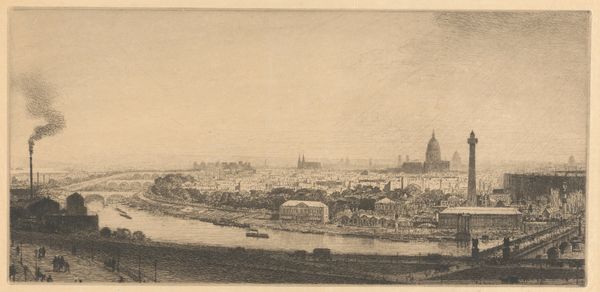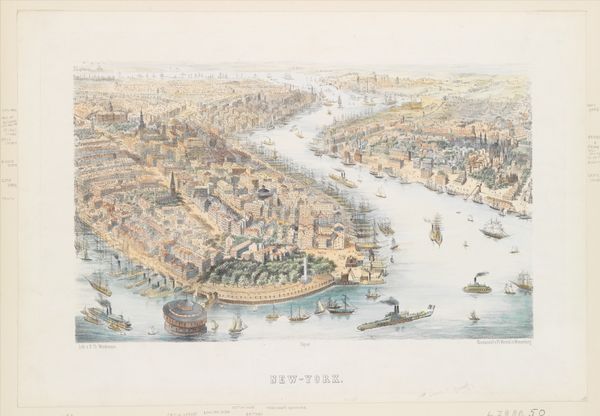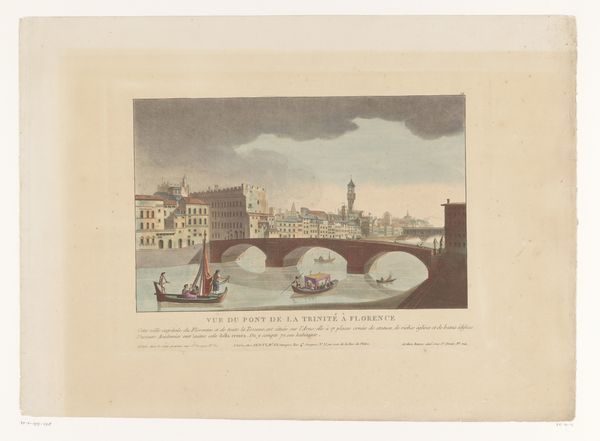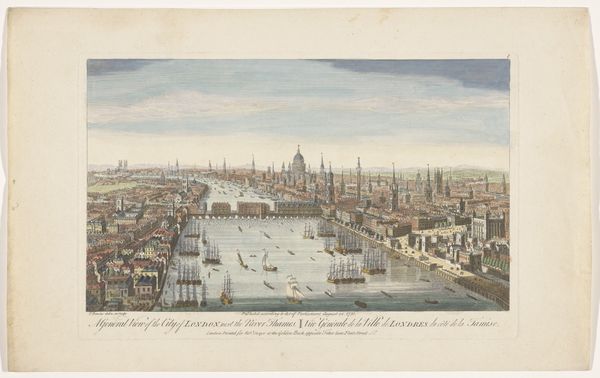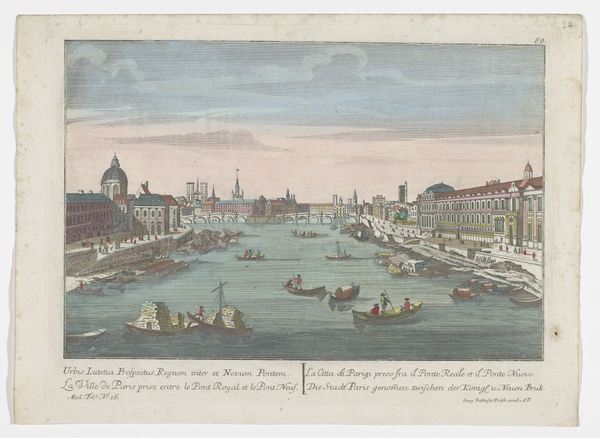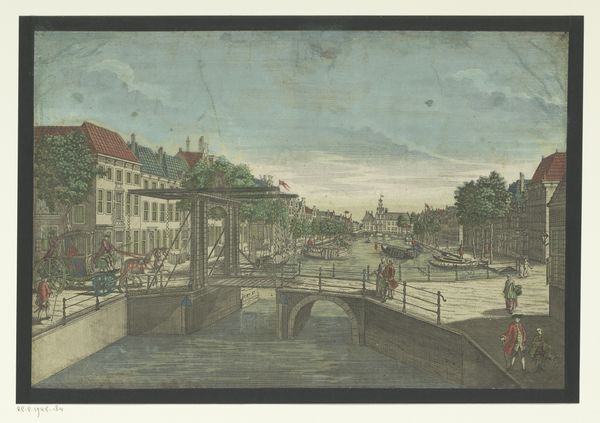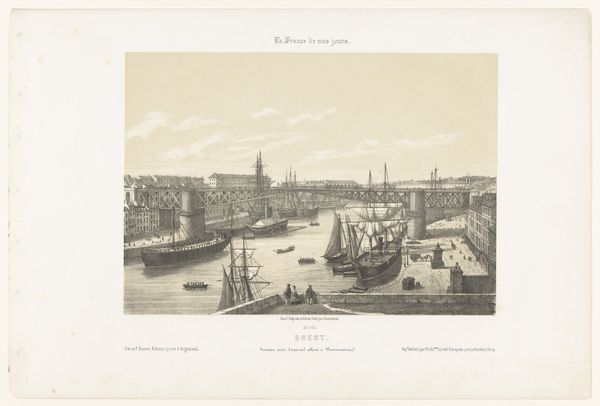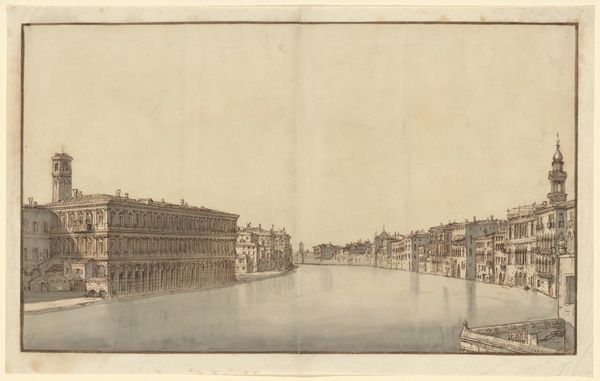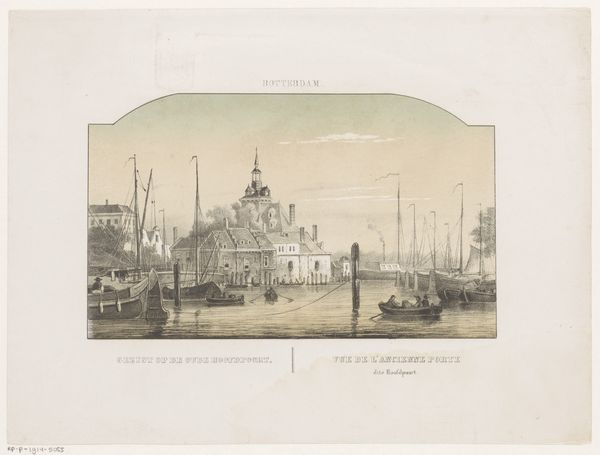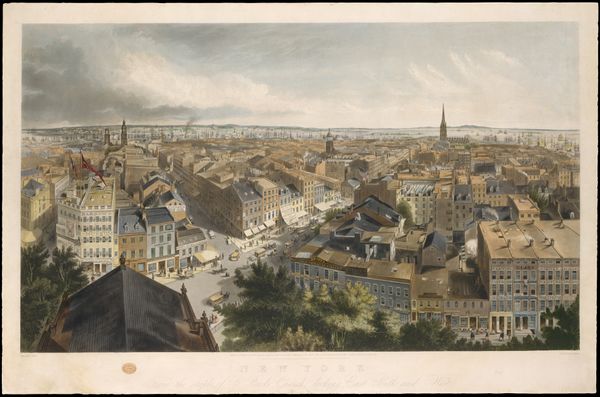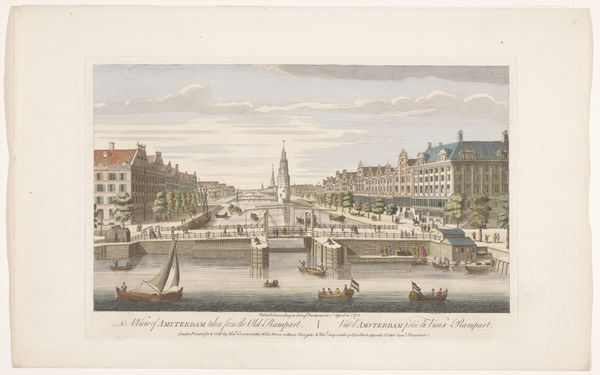
Dimensions: height 411 mm, width 650 mm
Copyright: Rijks Museum: Open Domain
Curator: Here we have a watercolor and ink drawing from after 1851, “Panorama gezien vanaf de Oosterkerk in Amsterdam” by Theodor Brüggemann, now housed here at the Rijksmuseum. Editor: My immediate thought is of serene, industriousness, that pale sky sitting over those rooftops like a protective blanket; and of course, the river… it pulses through the whole scene. Curator: Indeed. This work is an interesting artifact. Brüggemann wasn't necessarily aiming for perfect topographical accuracy. Think of this instead as a carefully constructed vision of Amsterdam at a critical point of industrial expansion, framed as a landscape view. Editor: Look at the masts of those ships, though— they echo the crosses of church steeples; each reaching heavenward, one driven by faith, the other, trade. And it's no accident they’re in harmony within the composition. What statements do you think Brüggemann might be making? Curator: It strikes me that by elevating his vantage point, likely from the Oosterkerk, Brüggemann creates a visual hierarchy. He positions the viewer— and therefore, implicitly, the church — as being 'above' the city's earthly commerce, even while dependent upon its citizens. It speaks to a common tension in rapidly industrializing cities: a perceived corruption from money. Editor: Exactly! Though perhaps "corruption" is too severe. It’s a changing power structure; Brüggemann, likely consciously or unconsciously, hints at anxieties surrounding commerce, industry, and traditional religious authority struggling to find balance. I imagine the city’s skyline was rapidly changing back then… Curator: It absolutely was, particularly in those areas near the harbor which is visible. He captured a pivotal moment in Amsterdam’s urban evolution, documenting that landscape as it moved irrevocably away from its merchant past toward a more industrious future. I appreciate the artist's clear dedication to working en plein-air. Editor: Ultimately, it’s the enduring visual motifs—the river, the rooftops, the towers—that still capture the city's spirit and that continuity is fascinating. I leave today with a feeling of having seen a hidden heart of Amsterdam. Curator: As do I! That negotiation between tradition and progress; that is forever etched into its streets and waterways and visible to this very day.
Comments
No comments
Be the first to comment and join the conversation on the ultimate creative platform.
